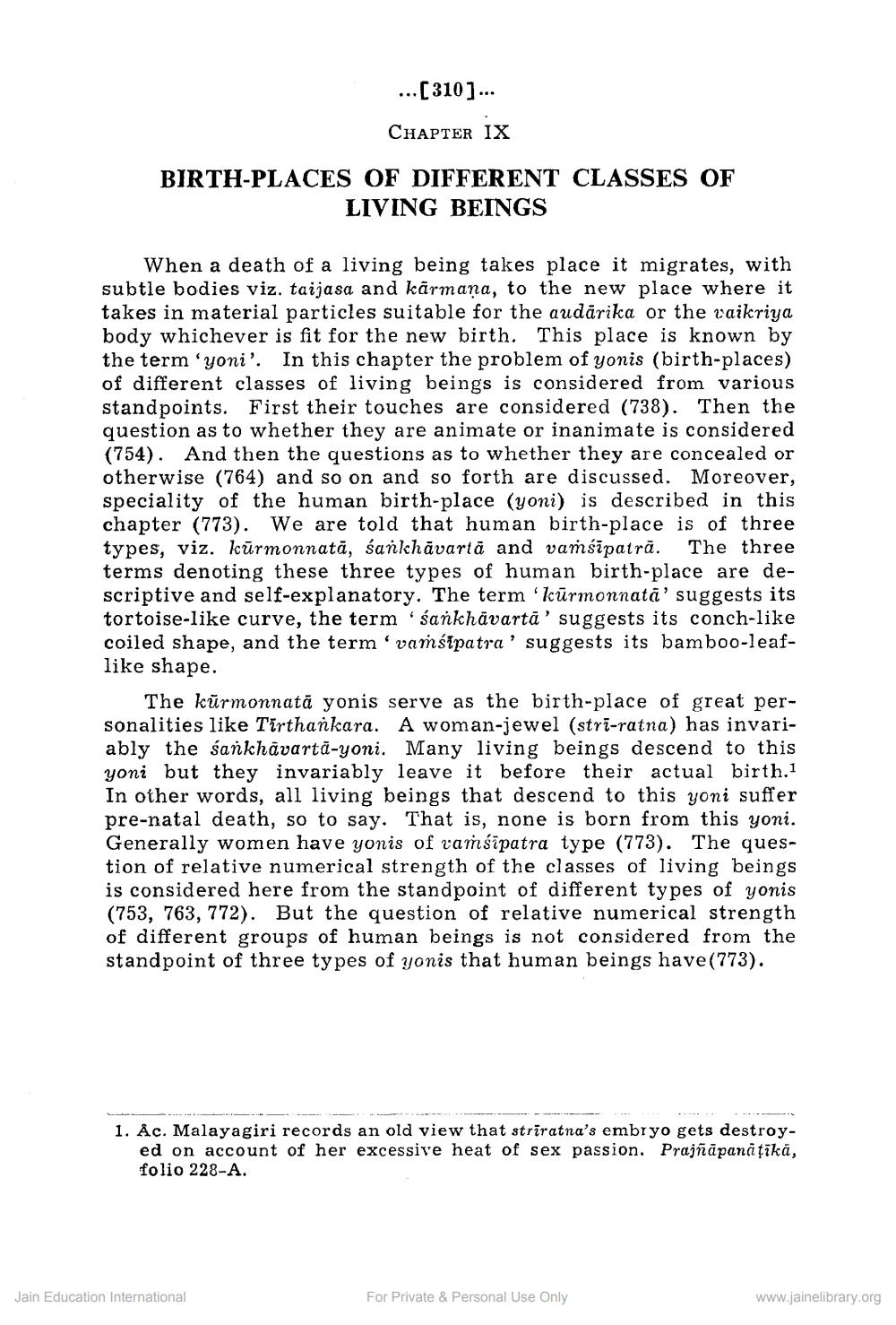________________
... [310]...
CHAPTER IX
BIRTH-PLACES OF DIFFERENT CLASSES OF
LIVING BEINGS
When a death of a living being takes place it migrates, with subtle bodies viz. taijasa and kārmana, to the new place where it takes in material particles suitable for the audārika or the waikriya body whichever is fit for the new birth. This place is known by the term 'yoni'. In this chapter the problem of yonis (birth-places) of different classes of living beings is considered from various standpoints. First their touches are considered (738). Then the question as to whether they are animate or inanimate is considered (754). And then the questions as to whether they are concealed or otherwise (764) and so on and so forth are discussed. Moreover, speciality of the human birth-place (yoni) is described in this chapter (773). We are told that human birth-place is of three types, viz. kūrmonnată, sankhāvartā and vamśīpatrā. The three terms denoting these three types of human birth-place are descriptive and self-explanatory. The term 'kūrmonnatā' suggests its tortoise-like curve, the term 'sankhāvartā' suggests its conch-like coiled shape, and the term 'vamśīpatra' suggests its bamboo-leaflike shape.
The kūrmonnatā yonis serve as the birth-place of great personalities like Tirthankara. A woman-jewel (stri-ratna) has invariably the sankhāvartā-yoni. Many living beings descend to this yoni but they invariably leave it before their actual birth.1 In other words, all living beings that descend to this yoni suffer pre-natal death, so to say. That is, none is born from this yoni. Generally women have yonis of vamśīpatra type (773). The question of relative numerical strength of the classes of living beings is considered here from the standpoint of different types of yonis (753, 763, 772). But the question of relative numerical strength of different groups of human beings is not considered from the standpoint of three types of yonis that human beings have(773).
1. Ac. Malayagiri records an old view that striratna's embryo gets destroy
ed on account of her excessive heat of sex passion. Prajñāpanātika, folio 228-A.
Jain Education International
For Private & Personal Use Only
www.jainelibrary.org




